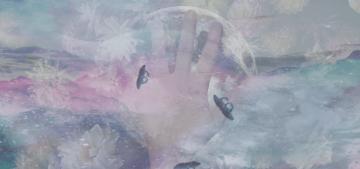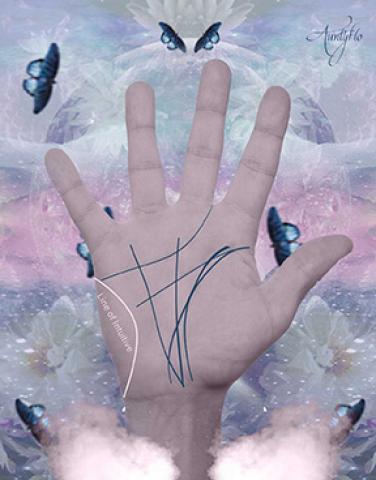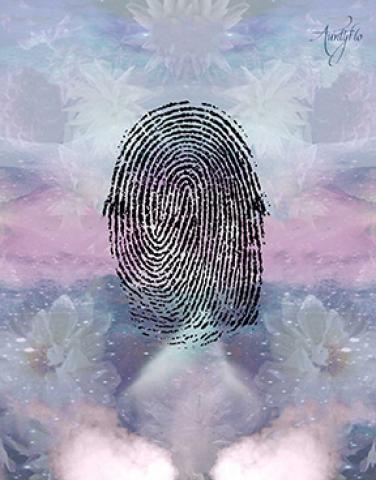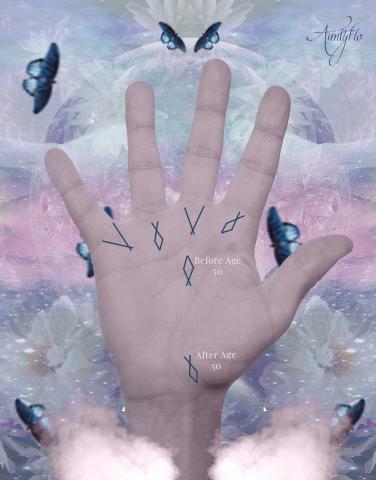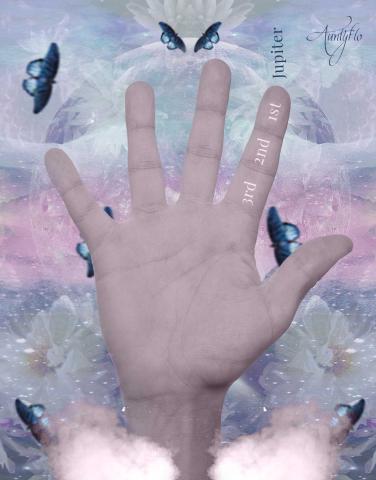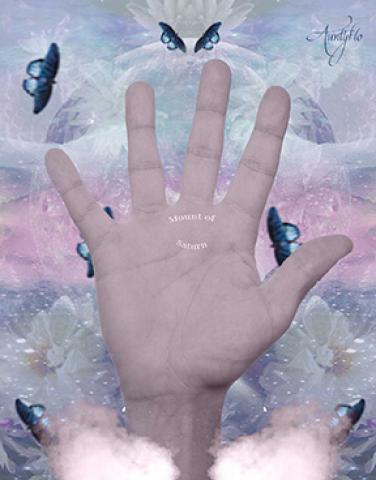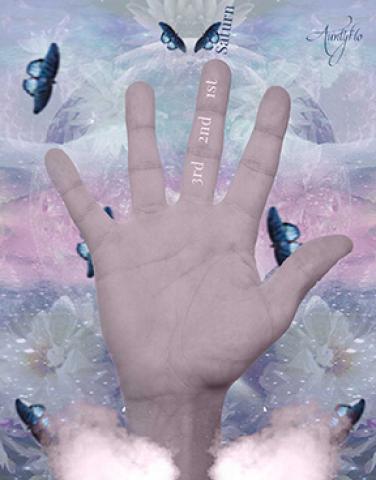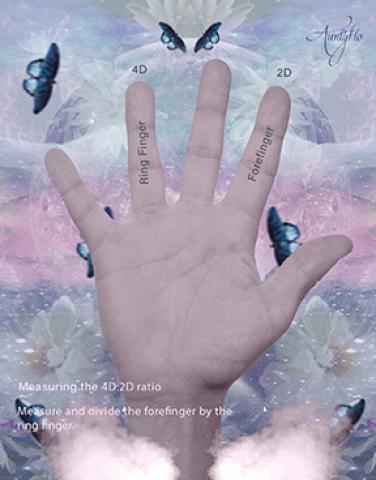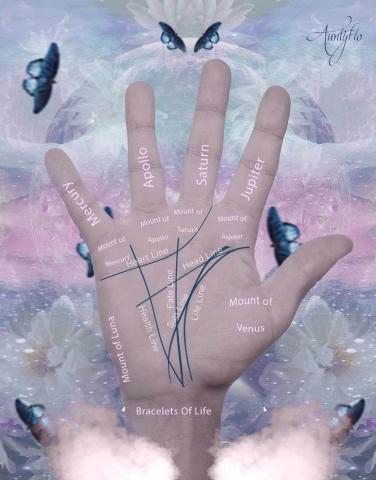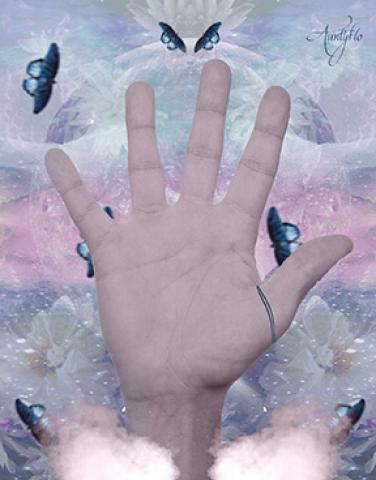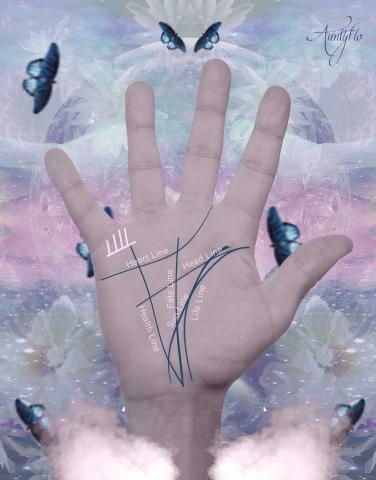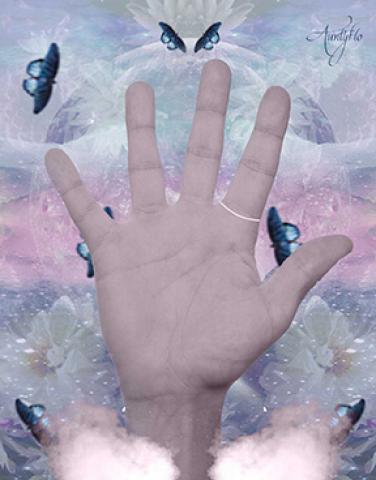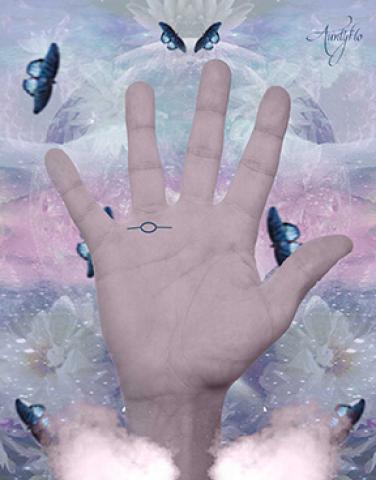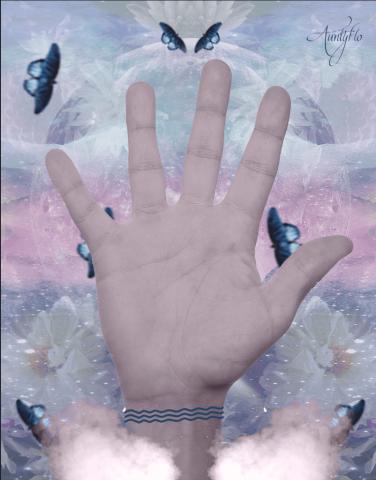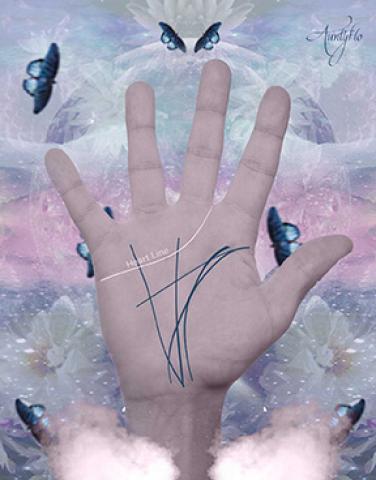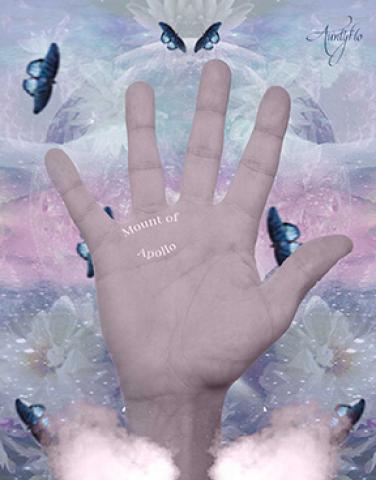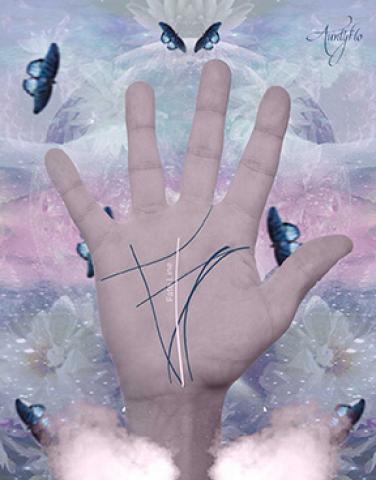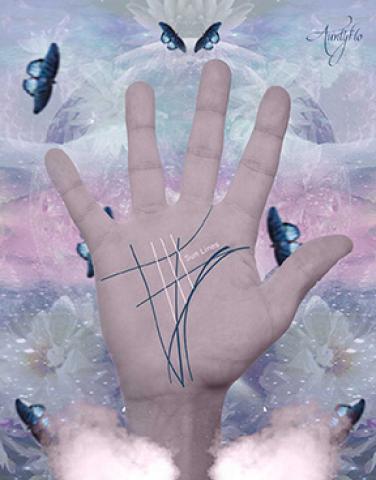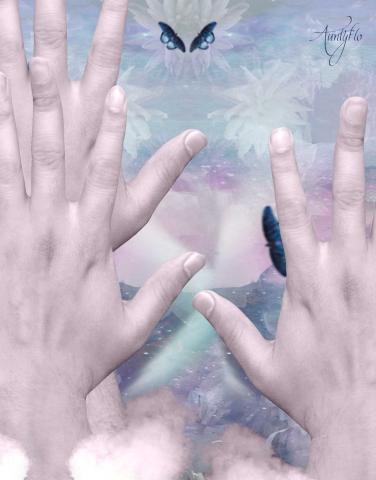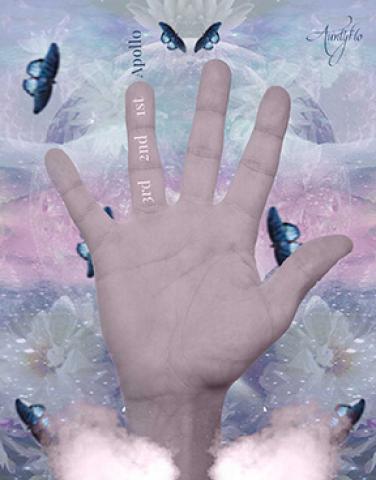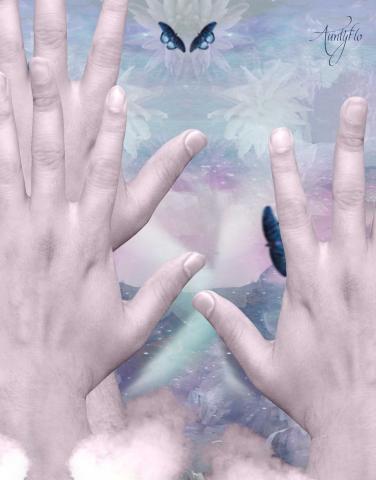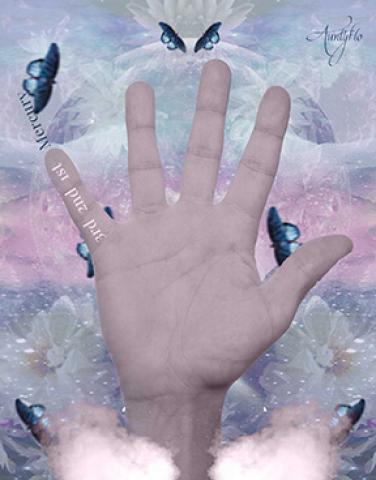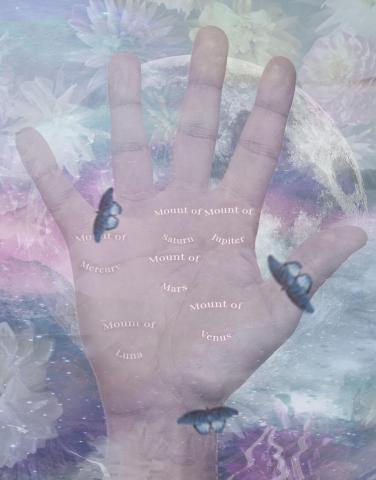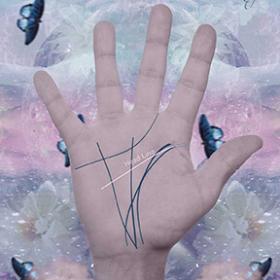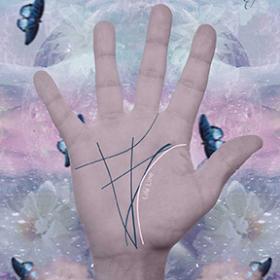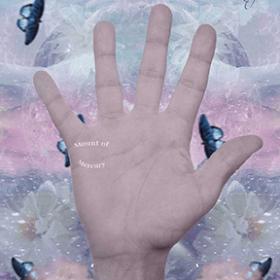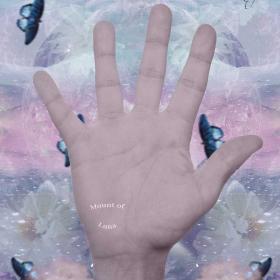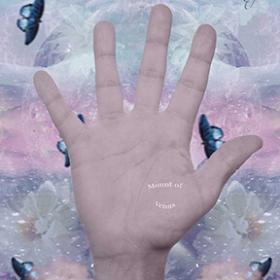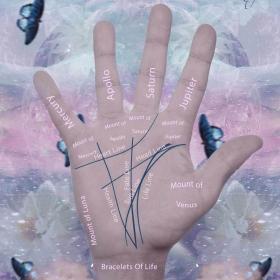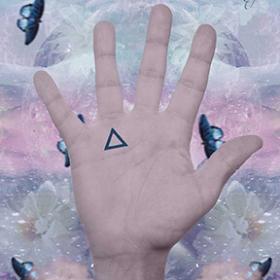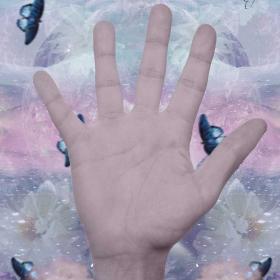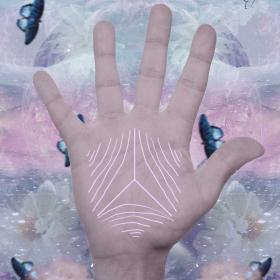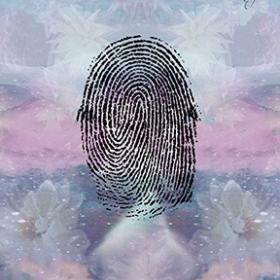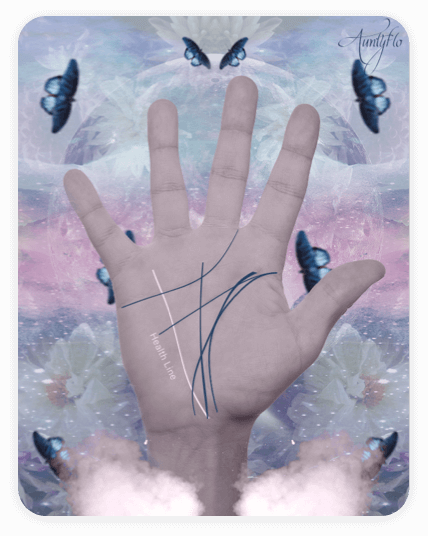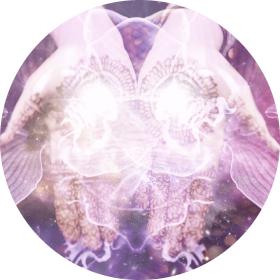Put your future in good hands - your own
Palmistry Question & Answers
Palm Reading Guide: How to Read Your Palm Lines
Introduction to Palmistry: Understanding Chiromancy and Chirognomy.
Palmistry is one of the more popular practices which is divided into two separate techniques:
- Chiromancy – Reading of the lines on the palm and fingers.
- Chirognomy – Reading the shapes, texture, and overall characteristics of the hand.
The two practices together can give you a complete reading of a person’s path, personality, and intrinsic personal traits that they may otherwise keep hidden.
This guide will provide you with a basic understanding of what to expect within the practice of palmistry so that you can get familiar with the concepts. We have listed the main areas of study and provided a breakdown of terms and general practice. If you would like to learn more or begin practicing either of these types of palmistry on your own, there is more information listed on our website.
With that being said, if you have no understanding of palmistry, other than what you have heard from Hollywood or parlor tricks, you will find this guide both informative and practical for getting started.
Note: Before you begin reading palms, take some time to get familiar with the different shapes and sizes of people’s hands and compare lines or mounts between hands. It is suggested that you have a complete grasp on your own hand before you begin reading for others.
Palmistry Guide - The Lines of The Palm
Secondary lines, those that are lighter and usually more abundant, are called the minor lines of the palm and fingers. They represent internal aspects mainly, including talents, strengths, weaknesses, and potential luck or challenges. The meanings can vary based on the shape or size of the hand. Combining the line readings in chiromancy with the size of the hand in chirognomy is a good way to get a more complete picture of the person that you are reading.
Palmistry Guide - Major Lines
The main lines that are first often looked at on the palm are the thickest and most defined ones on the palm. These include:
- Life Line
- Heart Line
- Head Line
Palmistry Guide - Minor Lines
There are 12 minor lines on the palm that correspond with both the fingers, the mounts, and the sides of the hand. These include:
- Apollo Line (Sun Line)
- Bracelet Lines (Rascette)
- Children Lines (Spawn Lines)
- Fate Line
- Girdle of Venus
- Health Line
- Intuition Line
- Relationship Line
- Simian Line
- Ring of Solomon (Jupiter Line)
- Ring of Saturn (Saturn Line)
- Ring of Apollo
Palmistry Guide - Mounts
The mounts of chiromancy refer to the fleshy pads on the palm and fingers. They reflect the planetary influences on a palmistry reading and can tell much about emotional, physical and spiritual makeup.
The mounts of the palm represent 6 main astrological planets which include:
- Mercury
- Moon
- Jupiter
- Saturn
- Sun (Apollo)
- Venus
If you have been reading carefully, you’re probably scratching your head because the above are only 6 planetary influences and there should be 7. The missing planet from the mount representation is Mars. The reason that it is mentioned separately is that the planetary energy of Mars specifically is prominent and one of the most important influences upon understanding the mounts in palmistry.
Mars is represented in 3 different sections on the hand. These sections are not bulging and fleshy as the other mounts, rather they are the recesses of the hand.
The three mounts for Mars are:
- Upper Mars
- Lower Mars
- The Plane of Mars
To find the appropriate mount of Mars on a hand, it can depend on the shape and size. Look for the dent, just below the pinky finger towards the side of the hand, the indent where the webbing of the thumb and pointer finger meet, and the center of the palm that creates a pool or divet between the other prominent pads on the hand.
Note: Some traditions state that the mounts of Mars are only present on the right hand. This is because traditionally, the right hand is the active hand, the one that represents moving forward, changes to your palms, and the assimilation of your fate into a life that has been led.
Palmistry Guide - Special Mark and Depth Indicators of the Palm
If you look at your palm, you will notice that not all lines are equal. Some are deeper, some are broken, and some branch off. Additionally, if you look closely at the different mounts and you will see that there are certain patterns that seem clear but don’t really apply to a line reading. These patterns are referred to as palmistry line deviations and palmistry markings.
While going through each one would take a book in itself, right now it is more important that you get familiar with the concepts so that you know what to look up later when you actually begin working on chiromancy techniques.
Palmistry Guide - Line Deviations
Line deviations are those that appear on the actual major and minor lines of the palm. Common deviations include:
- Ascending
- Branching (Forked)
- Broken
- Chained
- Descending (Cascading)
- Deep Set
- Islands
- Light (barely there)
- Sister
- Wavy
Palmistry Guide - Palmistry Markings
Common markings that you will on the palm almost always correlate with a mount. You may see a variety of markings and you may also notice that a mount has multiple markings on it. Each of the marks that you see does have a meaning. These marks are also associated with palmistry parlor tricks which we will talk about later in this guide.
The common palmistry markings that you will see include:
- Circles
- Crosses
- Geometric Shapes
- Grilles (Scoring)
- Islands
- Spots (Dots)
There are additional markers that are also used and certain chiromancers will instill meaning to them. Specific letters, especially the letter “M”, are often noted as well. It is important to notice the changes between shaping on each hand, noting whether the marker appears on one or both of the hands. Markers are an excellent way to be able to tell the inherent changes that a person has made or can also indicate a change that altered the person’s original fated map.
Palmistry Guide - Making Sense of Major Lines, Minor Lines, Mounts, and Markings
Our website has a detailed breakdown of the independent lines and mounts that are commonly read. If you want to find out which each means, I would suggest that you check out our illustrated guide to reading your palm which will give you more details.
In understanding chiromancy, the most important thing that you can take away from the lines, mounts, and markings is that each tells its own story. By looking up the individual meanings, you can take away some knowledge and make inferences. However, keep in mind that just because someone has a heart line that represents one thing, even if they have a strong thick line that clearly states a tendency or trait, the individual line doesn’t tell a story. You don’t really understand that until you take the whole picture into account. For this reason, while practicing learning lines, marks and mounts are important, it is not until you are comfortable enough with each individual meaning and can see the story that is presented on the palm, reading from passivity or fate, into action and manifestation, that you can get any meaningful information out of reading.
That being said, over the years, there have been developed parlor tricks. These “tricks” are not tricks at all, but rather solid truths that have been shown time and time again by readers. These snap judgments have infiltrated modern chiromancy and many professionals that practice the art of palmistry will tell you that certain strong or poignant marks are indicative of something specific.
We do have a “parlor trick” quick glance on our main site, and the reason that it is mentioned here is because these easy tells of the palm can make palmistry fun and interesting. However, it is suggested that you work through the meanings of the lines, the mounts, then the marks before jumping to the easy solution. Often they cause confusion and misreads in palmistry because while they are often true and accurate they can lead to an incomplete interpretation from novice readers that don’t understand the correlation, understand what hand to read them from, or what they mean for a complete and accurate reading.
Palmistry Guide - Chirognomy
Considered by some to be an offshoot of traditional palmistry, it could be said that the practice of chirognomy has always been a base part of palmists' understanding. Rather than focusing on the palm, with all of its lines, mounts, and markers, chirognomy focuses instead on the physical aspects of the hand and connects the meanings of shape, size, and disposition against planetary and energy-related meanings.
Palmistry Guide - The Importance of the Shape of the Hand
Chirognomy takes into account the entire real estate of the hand. If you notice, most people have the same basic hand structure, with a broad palm and then phalanges that branch out from the center. Once you begin looking at hands a lot though, you will come to notice that not all shapes are equal. Some are broad-palmed with chubby or stubby fingers. Other hands are slim and slender with a rectangular palm that is narrow and long spindly fingers. Different cultures are also known to have different shapes and often you can reduce hand shapes to represent the history of the person, being able to tell if their heritage is from one country or region or another. For the purpose of palmistry, the different hand types have been broken down into elemental influences and each shape is represented by either of the following:
- Air Hand
- Earth Hand
- Fire Hand
- Water Hand
Palmistry Guide - Hand Size
There are loads of parlor tricks that we commonly use in Western cultures that correlate with hand size. Some of these beliefs are actually rooted in chirognomy and other palmistry practices. However, for palmistry practices specifically, a chirognomer is going to focus on the size specifically, small versus large. Then they are going to note whether the fingers also correlate.
Palmistry Guide - The Importance of the Fingers
Chiromancy focuses on the mounts of the palm, which in many practices includes the specific pads that make up each finger. Additionally, each finger is associated with planetary energy that corresponds with the mount that is below it. Chirognomy looks at the overall shape, size, and length of the finger, attributing a specific meaning to this.
Some of the things that chirognomy focuses on for their readings are:
- Finger length, short vs. small
- Finger shape, slender vs. full
- Fingertip shape
- The state of fingernails (narrow vs. deep)
- The health of the skin on the hand (Texture and color)
Palmistry Guide - Beyond the Skin – Hair, Scarring, and Texture
Unlike other forms of palmistry, chirognomy also takes into consideration overall health, age, and other physical features including hand scarring, texture, clamminess, and hair. Each of these indicators has important meanings that can be applied to a palmistry reading.
Palmistry Guide - What a palmist looks for in a hand?
A palmist uses a number of ways to read different palms. There are a number of different techniques that have been crafted for not only “advanced” palm readers but also beginners. You will be able to identify a great palm reader because they not only look at the lines of the hand but they look at the texture, shape, tone, and additionally how deep each line is.
Additionally, there is an emphasis on the way one's fingertips look, the nails, and in addition the general health of the hand. There are many different aspects in palm reading that we need to consider.
Palmistry Guide - What are the Mounts in palmistry?
Each hand is segmented into mounts which include the following: the Mount of Jupiter, the Mount of Saturn, the Mount of Apollo, the Mount of Venus, the Mount of Mercury, the Mount of Mars, and finally the Mount of Luna as well as these mounts the palm reader will also look at the famous lines on the hand. The mounts found on hand are basically the small padded areas that are formed underneath the finger. Each mount generally protrudes outwards. The palm reader will generally look at the firmness of the mounts, the general check texture, and also the colors. Each mount has been connected with an astrological planet, in order to ascertain what each amount represents the characteristics of the planet are applied to each amount.
If we look at the amount of Saturn this is found in the middle of the hand, rather than going into the exact meaning of each mount at this moment, it is important to understand that each mount is associated with certain characteristics from an astrological viewpoint.
The other area that is important while reading the hand is the larger area between the Lifeline and the thumb itself. This is known as Venus. Interestingly the other mount found on the left-hand side, the opposite side of this is known as Lunar. If one has mounts that are not protruding and appear quite flat then this indicates that the bearer will have an active and balanced lifestyle.
Palmistry Guide - What is the apex on a mount in palmistry?
The other interesting fact surrounding mounts is that we may find an apex on the four mounts. Basically, the apex is like a triangular shape made up of many different lines. This apex allows us to identify the exact whereabouts of the mount sometimes the apex is to the left or the right of each amount, depending upon the position of the apex the more important the qualities of the mount will be. If you find a horizontal line on the mount and this can suggest specific areas where the influences of the planets are more dramatized. There are a number of different influences on the mounts, including the way that our fingers are shaped. When considering the characteristic of the bearer of the hand it is important to look for those markings such as the apex and also whether the fingertips are shaped well. Some people’s fingers are dark and others are white, these are all elements that need to be taken into consideration when carrying out a palm reading.
Crooked finger - what does the mount mean in palmistry?
If one of the fingers is slightly crooked it can suggest that whatever mount it falls under indicates negative associations with that mount.
Palmistry Guide - The Mount of Jupiter
This mount is located on the first finger of the hand underneath, it is associated with: motivation in life, career, religion, how sociable one is, loyalty to others, protection, and generosity. This person has morals, they do not believe that this should be treated differently just for the sake of it. The person who has this mount will concentrate on material gain in life.
The markings on the Mount are equally interesting. To see one line across the mount suggests that success will prevail. If there is a vertical line that runs from the tip of the Mount and across suggests the palm - that they will rule over others in life. If an X is found on this part of the Mount it suggests certain negative traits And can be somewhat difficult to control or manage. On a more positive side, the mount symbolizes a happy relationship with the opposite sex. It indicates that a person will fall in love and have a happy relationship.
If a star is found on the Mount of Jupiter this implies that success in life is important for the bearer of such a hand. It does suggest seeking knowledge in order to grow. The star also is associated with success stop to see a circle on the Mount of Jupiter indicates that this person will be popular in life.
Palmistry Guide - The Mount of Sun/Apollo
The amount of the sun is also known as the mount of Apollo. This mount is located under the ring finger, it is associated with the creative side of life. The mount is associated with intellectual minds and hidden energy. Many famous celebrities carry a strong mount of Apollo. This mount is also associated with the greater things in life. It can signify the “luck or fame” of an individual.
A single line running from this mount into the hand suggests that the bearer has not only talent but motivation and the ambition to succeed in life. There are many different lines that can appear on the Mount and if a ring is circled across the Mount then this can indicate great energy for life. To see a star on Mount Apollo is a suggestion that material riches will be given to the bearer. It has been documented that a star on the Mount of Apollo is the best mark in that one could get in the hand.
To see a fork placed on the Mount of Apollo indicates fantastic motivation, success, and financial gain. The problem with this symbol is that the bearer will have to put a lot of hard work into a business project in order to benefit all mankind. Writing this palmistry guide interestingly I have noticed that this sign is on my hand, perhaps because it relates very clearly to the passion I have for this website and the tremendous amount of effort and motivation that is required to keep it going. It was quite liberating to find this particular sign on my hand.
Squares upon the Mount of Apollo suggest personal effort. A circle on this amount is extremely rare and indicates that excellence is called for in life. To see a cross on Mount Apollo suggests that one’s energy is blocked the only way for success to release energy. Crossbars on the Mount of Apollo are associated with a number of different obstacles in life.
Palmistry Guide - The Mount of Mercury
The mount of mercury is found directly below the little finger and this goes all the way down to the heart but it can sometimes be quite small and difficult to see. A firm muscle tone indicates a strong mercury mount, especially if it has a central-shaped apex. There should be no clear markings on this mount may find a few lines. If however, you do notice some markings I will briefly provide an overview. A square suggests that you will approach things in an organized manner. To see a triangle indicates that you enjoy creative activities, a star suggests intelligence gathering knowledge, to see line extensions on the mount indicates one will study medicine. Crossbars on this amount suggest possible health issues and grills indicate having criminal tendencies.
Palmistry Guide - The Mount of Venus
The Mount of Venus is associated with love, relationships, and also emotional connections to others. This amount is interesting and is associated with an engaging and likable characteristic. The mountain Venus can often have many different features on the hand such as cross lines, stars, dots or lines. Generally, this is a good area of the hand to be. The mount of Venus is usually found on those people’s hands who will have successful relationships in life, they enjoy socialization and friendships. The mount is found directly underneath the thumb and can have a number of different lines, there is important markings that can be found upon this mount. there is a likelihood that those who have smooth in texture venus mounts will live a long happy life. In an ancient dusty palmistry book, I will briefly go over the meaning of the different interpretations of the signs on the palm.
A cross indicates a good judge of character when it comes to relationships, fork suggests that you are going to be impulsive and artistic in the future. A dot found on the Mount of Venus suggests that you are going to hold an honest disposition in life. If you find any chains or lines and this can show the amount of knowledge that you have in life. If you see a heart shape on the Mount of Venus indicates internal love and everlasting lust in a relationship.
Palmistry Guide - The mount of luna
The Mount of lunar can be located underneath the little finger at the base of the hand. As we all understand “Luna” is a translation for the moon. It can be associated with the power of our psychic ability, inner child and intuition. It is important to look at this amount in order to understand the characteristics. Generally, those that write fiction books have this on their mount and it is normally protruding from the hand. The problem with the Mount of lunar is that sometimes in life it is difficult for people to come across in the right way. The Mount of Luna is equally connected to the “dark” parts of our lives.

